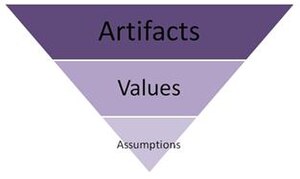On any given day, one can look at Twitter, Mashable, or any number of other sites and receive advice on how to use social media tools to improve customer outreach, loyalty, and employee engagement. Some of these posts are mediocre, while others are quite good and provide sound guidance and case studies. But, they all start with an assumption that social media or social business is an imperative and that all organizations should evolve to this state. Is this premise correct?
My concern is that in our impatience to encourage organizations to develop social media strategies with appropriate goals and metrics, we have failed to give sufficient focus to the obstacles that they might face. We do not live in a one size fits all world and yet we sometimes dispense advice as if this was the case.
At a cloud computing conference last week, I heard several speakers promote the value of private clouds and talk about how control was shifting back to the end-users. They postulated that that the role of the IT department was going to evolve into negotiating services rather than supplying them. Amidst the facts and figures about money to be saved and speed of delivery, the question arose to what obstacles did cloud computing face. Without hesitation, the speakers all agreed that organizational culture was the biggest hurdle; it is not the technology that is hard to install, it is the people and culture that are difficult to change. This same argument has also been given for why some social implementations work and others don’t.
So what is organizational culture and why is it so difficult to change? Organizational culture encompasses things that are typically taken for granted by those who exist within that culture. They include underlying assumptions and norms, expectations, and collective stories or memories. Cultures may even be personified by logos and mission statements and are reflected in the design of buildings or office campuses. They convey a sense of identity and provide unwritten guidelines about how things get done. In many cases people are not truly aware of their distinct culture until it is challenged or they experience a culture that is quite different.
Although organizational culture may be difficult to change, it can be classified and measured. One widely-used organizational cultural framework states that there are four archetypes of organizational culture. Each is typified by different leadership styles, values and beliefs about effectiveness. They are:
- Internally focused hierarchical/control based cultures
- Internally focused collaborative or clan cultures
- Externally focused competitive or market cultures
- Externally focused innovation based cultures.
While both internally focused, a hierarchical culture is concerned with control systems and coordination while a collaborative culture places the emphasis on interpersonal relationships. The externally focused market culture puts a priority on managing customer service and competitiveness, while the innovative culture is more concerned about the future and managing discovery and innovation. Each will react very differently to the imposition of social media initiatives.
While there is no question that social is the way business will be done in the future, there is clearly a need to understand the culture into which it will be driven. It is important to assess one’s starting point. Culture change is possible, but it has to be thoughtful and tailored. It clearly will not happen overnight. This type of change will also require a leadership vision and strategy that enables the organization to move from where it is, to where it needs to be. And depending on the current culture, this might be a short distance or a very long road!
If you’d like to shorten that road a bit, you might want to sign up for one of our Biznology Jumpstart Workshops, especially the one on Social Business. Your team will receive training to work through their own plan for improving your culture for social business right at your own location.







